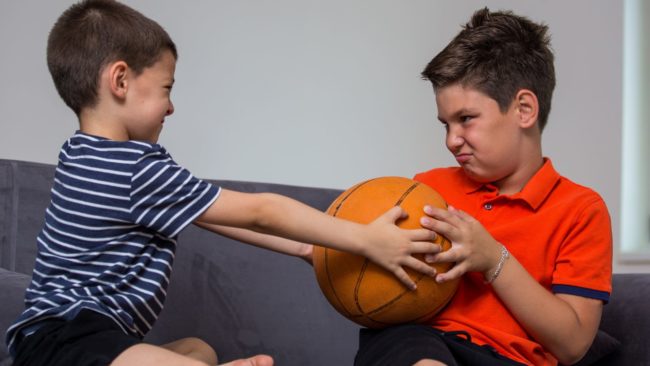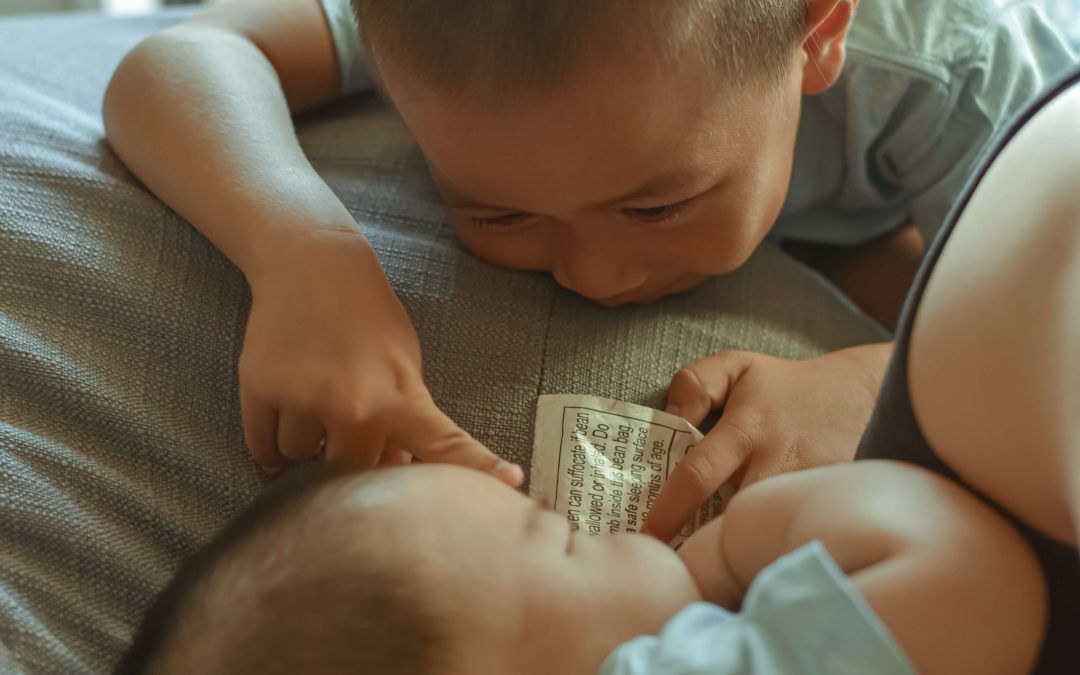
You thought having two kids would be nice, right? You thought they would play with each other, be best friends, share toys and memories together, perhaps? But then the fighting started- little niggles at first, followed by full on sniping and arguments.
What you’re witnessing is the start of sibling rivalry.
What is sibling rivalry and why does it happen?
Sibling rivalry describes the ongoing conflict between children in the family home. It can continue into adulthood. The siblings needn’t be biologically linked for tension to arise- step-siblings, adopted and fostered children can also experience rivalry.
There may be a range of reasons why sibling rivalry occurs. It may begin when a child feels threatened by the arrival of a new sibling, or if they feel they aren’t receiving enough attention.
Sibling rivalry includes:
- name-calling
- blaming
- poking
- stealing things
- lying
- jealousy
- challenging a belief
- arguing
- simply looking at each other
- breaking something that belongs to the other one
- hitting
- throwing something at the other one
- hiding something that is important to the other one.
Children may argue or fight because they:
- get attention from you.
- feel powerful
- get a break from boredom. Annoying a sibling may seem more exciting than anything else going on
- connect with their sibling
- get physical contact
- become the ‘favoured one’ in their parents’ eyes by making their sibling look bad.
Sibling rivalry can be at its worst when both children are under 4 years of age, especially when they are less than three years apart. Children under the age of 4 depend on their parents a great deal and have a very hard time sharing them with siblings.
Competition between brothers and sisters can grow as they grow older—usually it is worse between ages 8 and 12. Siblings who are close in age or who have similar interests tend to compete more. Home is a comfort zone, and children feel accepted and loved and naturally fall apart in ways they never would at a friend’s house or in school.
As the younger child grows older and develops more skills and talents, the older child may feel threatened, embarrassed, or “shown up” by the younger one. This can lead to unnecessary competition or aggression from the older child.
Gender can also cause friction. For instance, a son may resent his sister because his father seems gentler with her. On the other hand, a daughter may wish she could go to the football match with her father and brother.
How to handle sibling rivalry, without losing your cool:
Make a ‘kind hands’ rule
When kids get frustrated, they can lash out physically, and it’s not pleasant. It happens less frequently as they get older and develop better ways of expressing themselves, but they may still fight from time to time.
Make sure your kids know that violence is unacceptable. If they solve their conflicts peacefully, make sure you praise their efforts.
Don’t put one child in charge
Sibling rivalry is a natural consequence of birth order. The oldest child is often responsible, determined, and a perfectionist. The youngest is often a risk-taker who gets told off. Kids born in the middle often become a mediator.
Avoid putting one child being in charge- it won’t work as they won’t yet have the skills to exert their authority fairly. Instead, you can place both children in charge, and tell them you trust them to act fairly with each other.
This encourages the younger child to be responsible, and the older sibling to be good to his younger sibling.
Take time with each child individually
Spend time with each child on their own- even an hour here or there. Ensuring each child gets enough of your sole attention can go a long way to healing any rivalry.
Give your children the attention they crave by spending some quality time with each of them every day. As you bond and your relationship is strengthens, so does their desire to please. They begin listening more, and battle less with us and with their siblings.
Listen to them
A little sibling rivalry can be good for children if it does not get out of hand – it is a natural development stage and can help kids learn to regulate their emotions. However, daily clashes don’t make for a harmonious family life and it can become too much.
Make sure you listen to your kids’ feelings and frustrations- and have a few tricks up your sleeve as distractions if things get niggly between them.
Never take sides
Problems between siblings can lead to solution building and coping skills. Children can learn how to:
- deal with power struggles.
- manage conflict and resolve differences.
- be assertive and to stand up for their position.
- negotiate and compromise.
- help to develop their unique personalities
Therefore, unless they become out of control, stay out of sibling’s feuds. Never take sides with either child- doing so will foster more resentment and make the issue worse.
React calmly but firmly
If they cannot come to an agreement be calm and firm and say things like: “If you can’t work out how to share that toy with your baby brother, I’ll take it away until tomorrow.”
This teaches kids about consequences and urges them to play nicely.
Anger is a natural emotion
Contrary to what many people think, anger is not something we should try to avoid. It’s a normal part of being human, and it’s certainly normal for siblings to get angry with each other and even fight.
However, this is where you come in. As the responsible adult in charge you can steer your kids towards understanding each other’s feelings, and calming down when they become overwhelmed. Deep breathing is a brilliant tool for relaxing kids, and having a self-soothe box available at all times can help- a shoebox filled with things that make them feel calm and happy, such as family photos and stress toys.








